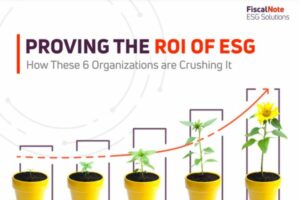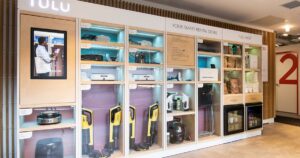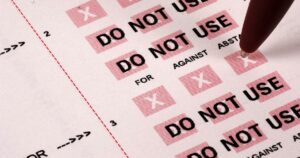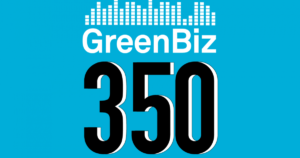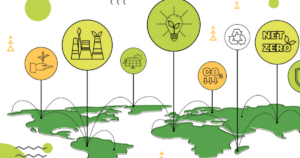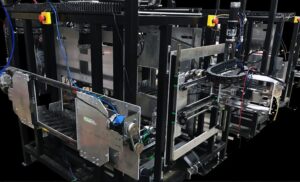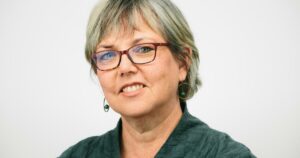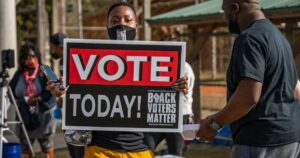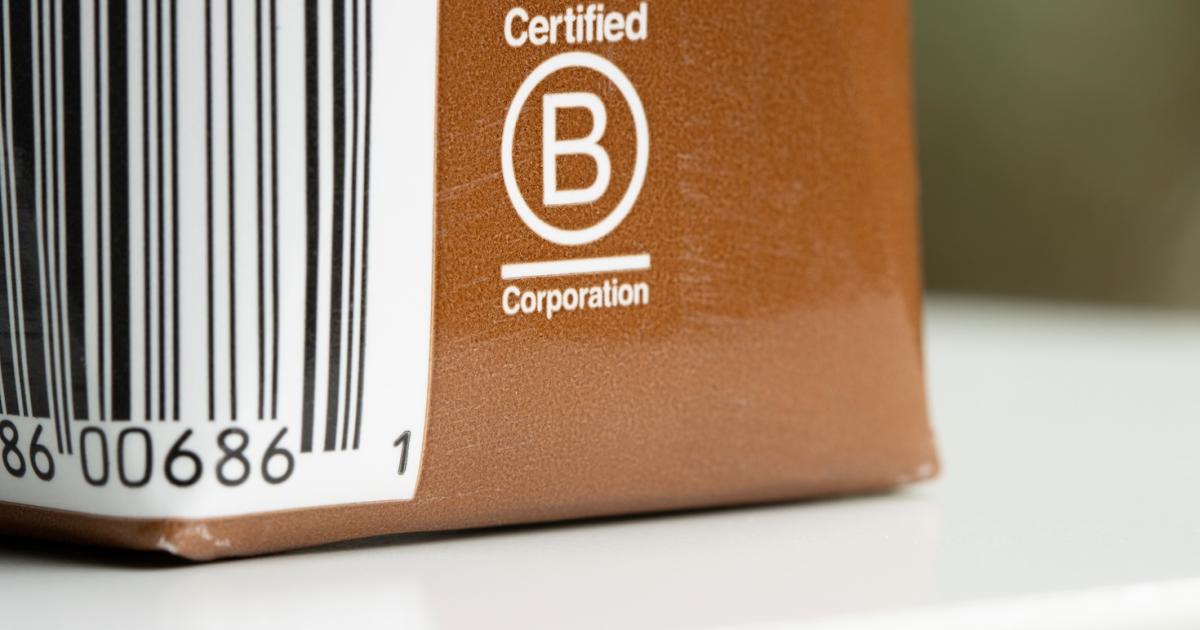
Early in my career — well before leading product teams for Walmart and Jet.com — I dreamed of working for a B Corp. When it came time for me to start and lead Sustain.Life, I knew from the beginning that the company needed a B Corp certification.
Over a decade ago in the Brooklyn startup community, I looked up to Etsy, my first encounter with a company designated as a B Corp. The mission resonated with me — it allowed companies to showcase their responsible business practices in a very public and credible way. B Corp status is a badge of honor. It signals to customers, stakeholders, investors and employees that this company cares. It says, "This company has gone through a meticulous process to go beyond profits to also consider its people, communities, and the planet."
Fast forward to March. I’m proud to say we're one of the only B Corp-certified sustainability software providers. The certification we received last month shows our team and customers that we take climate action and good governance very seriously.
If you’re on the fence about going through the process of becoming a B Corp, my advice: Go for it! And here’s what you need to know about that journey.
Our B Corp process: Early days
I started work on our B Corp application even before Sustain.Life officially incorporated as a company — eager, I know — we didn't even have our company email addresses yet.
While it might feel like a case of putting the cart before the horse, the B Corp standards served as a rubric to start a company from an intentional, thoughtful place. It helped my co-founders and me think through policies and practices for everything from treating employees fairly to how we would think about our own impact on the environment.
With the B Impact Assessment, the tool used by prospective B Corps to guide preparation and data gathering, we had a checklist and guardrails to build mindfully from day one. In the early days of starting a business, there are so many decisions to make about how to operate and set up things such as benefits, your recruiting processes, etc. The assessment gave us a clear and actionable rubric for understanding what best-in-class looks like across categories. It helped lay the fundamental groundwork for running our business, for strategy such as employee training and stakeholder engagement, as an example.
At Sustain.Life, we tell our clients and prospects how important it is to put their emissions measurement processes in place early to have the kind of robust data you need for audit-ready carbon accounting. We certainly benefited from taking our own advice and putting measurement efforts in place when we had just started to operate. When it came time to submit our B Corp application, we were well prepared and able to pull in the necessary data and supporting materials.
B Corp background
B Corp refers to a company that has received certification from the nonprofit B Lab. Founded in 2006, B Lab focuses on economic systems change through standards, policies and tools for business, and administers the B Corp certification. More than 3,900 companies in 70 countries are certified.
Certification is partly based on verified performance on the B Impact Assessment, a rigorous evaluation of a company's impact on workers, community, environment and customers. B Corps must also make a legal change by updating their Articles of Incorporation, reincorporating as a benefit corporation or making other structural changes. B Corps update their B Impact Assessment and verify their updated score every three years to maintain certification.
Our B Corp score
To become a certified B Corp, a business must have a minimum score of 80 (the maximum is 200). At Sustain.Life, we earned a B Impact Score of 84.7. While it took a lot of planning and administrative work to meet that initial threshold, we're proud of our score and look forward to improving in the future.
Given our mission and focus on helping businesses measure and reduce their carbon footprint, we scored quite well on the environment section of the certification. However, like many companies we work with, one of their — and our — biggest challenges is supplier engagement. Because of our relatively small size, it's hard to get suppliers to respond to our assessments, which impacts areas of our environment category.
We also experienced challenges related to our fully remote workforce. Some categories in the assessment were not applicable to Sustain.Life — for example, because we don’t have a physical office, we didn’t include data for our buildings. However, we think that our employees’ home emissions are an important part of our own footprint — in fact, we measure and offset the entirety of our employees’ personal carbon footprints, in addition to offering a sustainability stipend to help employees make sustainable changes in their personal lives. Even though we don’t have our own office space, we still wanted to address the Scope 1 and 2 emissions associated with remote work. We had several productive conversations with the helpful B Lab team about how best to record these emissions and explain our policies. So, if you ever feel a section of the Assessment doesn’t quite relate to your company, it's worth asking questions and getting feedback specific to your situation.
Tips for making your company a B Corp
I'll be honest — the B Corp application is a substantial time commitment. Because we wanted Sustain.Life to become a B Corp even before we were an official company, we had an advantage — no previous decisions or policies to revise
But whether you're a startup or have been around for decades, I have one piece of advice: If you want your B Corp assessment to go smoothly, it has to be a collaborative effort. And just as important: buy-in from leadership and alignment from the top down.
If you're a founder who cares about becoming a B Corp, I highly recommend getting involved with your cross-functional team to complete the application. Some decisions, particularly about policies, can be made much more quickly with the founder present in the conversation.
Other advice for your B Corp application
1. Don't wing it. Jump into the B Impact Assessment early and often. Use it to guide your processes and how you govern your company.
2. Involve the right people on your team. Make your B Corp application a cross-functional effort. For Sustain.Life we had a period of about eight months where we held monthly meetings, sometimes bi-weekly. We brought in people from around the business to ensure we had proper levers in place, including NPS and data security measures.
3. Start your data collection efforts early, particularly for environmental data that isn’t usually captured in an existing system the way that revenue and workforce data is in accounting and HR platforms. Data and supporting material are a very important part of the assessment — having a measurement program in place will help you respond to the assessment confidently and give you the information you need to improve over time.
4. Don't be afraid to ask questions to B Lab. The team there was always extremely helpful, and this ties back to the point around not winging it. If you don't know something, ask.
At the end of the day, I’m so proud of my team for becoming a B Corp. I look forward interacting with even more of the B Corp community in the years to come.
- SEO Powered Content & PR Distribution. Get Amplified Today.
- Platoblockchain. Web3 Metaverse Intelligence. Knowledge Amplified. Access Here.
- Minting the Future w Adryenn Ashley. Access Here.
- Source: https://www.greenbiz.com/article/instead-working-b-corp-i-decided-build-one
- :is
- $UP
- 1
- 7
- 70
- 8
- 84
- a
- Able
- About
- Accounting
- across
- Action
- addition
- address
- addresses
- administrative
- ADvantage
- advice
- always
- and
- applicable
- Application
- ARE
- areas
- around
- article
- articles
- AS
- assessment
- assessments
- associated
- At
- back
- based
- BE
- because
- become
- becoming
- before
- Beginning
- benefit
- benefits
- BEST
- Beyond
- Biggest
- Brooklyn
- brought
- build
- business
- business practices
- businesses
- by
- CAN
- carbon
- carbon footprint
- Career
- case
- categories
- Category
- certainly
- Certification
- Certified
- challenges
- change
- Changes
- clear
- clients
- Climate
- climate action
- co-founders
- collaborative
- collection
- COM
- come
- commitment
- Communities
- community
- Companies
- company
- complete
- confidently
- Consider
- Conversation
- conversations
- Corp
- CORPORATION
- countries
- credible
- Customers
- data
- data security
- day
- Days
- decade
- decades
- decided
- decisions
- designated
- Doesn’t
- Dont
- down
- Early
- earned
- Economic
- economy
- effort
- efforts
- Emissions
- Employee
- employees
- encounter
- engagement
- ensure
- entirety
- Environment
- environmental
- etc
- evaluation
- Even
- EVER
- Every
- everything
- example
- existing
- existing system
- experienced
- Explain
- expressed
- extremely
- fairly
- feedback
- First
- Focus
- focuses
- Footprint
- For
- Forward
- Founded
- founder
- from
- fully
- fundamental
- future
- gathering
- get
- getting
- Give
- Go
- going
- good
- governance
- groundwork
- guide
- Hard
- Have
- having
- Held
- help
- helped
- helpful
- helping
- highly
- Home
- Horse
- How
- How To
- However
- hr
- HTTPS
- i
- Impact
- Impacts
- important
- improve
- improving
- in
- include
- Including
- Incorporated
- information
- initial
- instead
- Intentional
- interacting
- Investors
- involved
- IT
- ITS
- journey
- jpg
- jump
- Kind
- Know
- lab
- Last
- lead
- Leadership
- leading
- Legal
- Life
- like
- Lives
- Look
- looked
- LOOKS
- Lot
- made
- maintain
- make
- Making
- many
- March
- material
- materials
- maximum
- measure
- measures
- Meet
- meetings
- might
- minimum
- Mission
- Month
- monthly
- months
- more
- necessarily
- necessary
- Need
- needed
- node
- Nonprofit
- of
- offering
- Office
- official
- Officially
- offset
- on
- ONE
- operate
- Other
- Our Company
- own
- part
- particularly
- People
- performance
- period
- personal
- perspectives
- physical
- piece
- Place
- planet
- planning
- Platforms
- plato
- Plato Data Intelligence
- PlatoData
- Point
- policies
- position
- practices
- prepared
- present
- previous
- process
- processes
- Product
- productive
- profits
- Program
- proper
- prospective
- prospects
- proud
- providers
- public
- Publishes
- put
- Putting
- Questions
- quickly
- range
- RE
- received
- recommend
- record
- recruiting
- reduce
- refers
- reflect
- related
- relatively
- remote
- remote work
- Remote Workforce
- Respond
- responsible
- revenue
- rigorous
- robust
- running
- s
- says
- scope
- score
- Section
- security
- Security Measures
- set
- several
- showcase
- Shows
- signals
- situation
- Size
- small
- smoothly
- So
- Software
- some
- something
- Space
- specific
- stakeholder
- stakeholders
- standards
- start
- started
- Starting
- Starting a Business
- startup
- Status
- Still
- Strategy
- structural
- submit
- substantial
- such
- suppliers
- Supporting
- Sustainability
- sustainable
- system
- Systems
- Take
- taking
- team
- teams
- that
- The
- The Future
- the information
- their
- These
- things
- three
- threshold
- Through
- Ties
- time
- to
- tool
- tools
- top
- Training
- transition
- treating
- understanding
- Update
- updated
- updating
- us
- use
- usually
- verified
- verify
- views
- Walmart
- wanted
- Way..
- WELL
- What
- whether
- which
- while
- WHO
- will
- Wing
- with
- Work
- workers
- Workforce
- working
- worth
- would
- years
- Your
- zephyrnet

